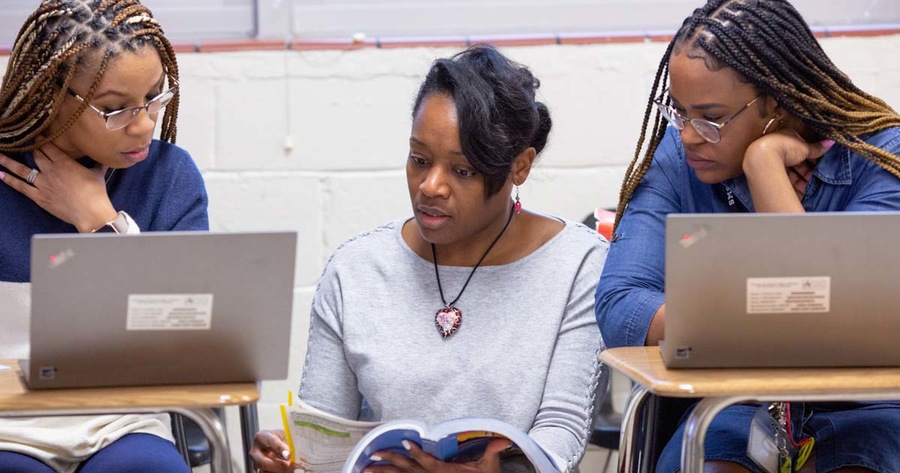The report presents findings from the first two years of the Partnerships for Social and Emotional Learning Initiative (PSELI), a multiyear effort funded by The Wallace Foundation exploring whether and how children can benefit from partnerships between schools and OST programs focused on building social and emotional skills.
The report, which focused on the six communities in PSELI, is designed to be useful to those carrying out SEL instruction in schools, out-of-school-time programs, or both, and should also be of interest to policymakers, SEL technical assistance providers, funders, researchers, and others who are considering supporting youth social and emotional development.
When it comes to adults and SEL, research indicates it's crucial for adults to foster supportive relationships with students to aid in their social and emotional development, as well as adults developing their own SEL skills through professional development opportunities. During the first two years of PSELI implementation, there were several key takeaways on developing adults' capacity to promote SEL:
- PSELI communities viewed adult SEL skills as a foundation for building student SEL skills.
- Staff wanted SEL PD to include hands-on practice and, as their SEL work progressed, to focus on differentiation of SEL instruction.
- Staff turnover posed a persistent challenge for PD delivery.
- Although support for SEL was high among school and OST staff, they also expressed concerns.
- Several PSELI communities have learned to centralize the delivery of at least some SEL PD for frontline staff, especially the PD about the SEL curriculum.
- SEL coaches have served a critical function in helping schools and OST programs deliver SEL instruction.
In recognition of staff turnover, the report suggests including in a recurring SEL PD schedule both longer sessions about SEL instruction and more-frequent but shorter sessions on more-discrete SEL topics. The report also stresses to not rely exclusively on a train-the-trainer model in which the responsibility for all SEL training falls solely onsite leaders—especially for training about SEL curricula (or content sequences) and pedagogy; content expertise is critical for those topics. Lastly, when using a SEL coach, develop a written document for coaches and site-level leaders that codifies the coaches' responsibilities, including minimum coaching requirements and number of visits, and discuss this document with each involved party.
For improving climate and delivery of SEL for youth, evidence cited within the report suggests that SEL work is more successful at improving climate and student outcomes when it is implemented school- or program-wide.
The National Commission on Social, Emotional, and Academic Development identified three core approaches to implementing SEL for students, which are discussed in the report as: Setting a positive climate; offering explicit SEL instruction to students; and integrating SEL into academic instruction and OST activities. Those three components, along with school-OST partnerships, are the primary mechanisms through which the 38 PSELI sites studied work to improve students' SEL outcomes.
The report offered several key takeaways and early lessons related to climate and delivery found from the PSELI communities studied:
- SEL rituals and routines were a good starting point for promoting a positive climate.
- Time for stand-alone SEL lessons was often cut short.
- Most of the schools adapted the SEL curriculum used.
- SEL content sequences for OST programs were in an early stage of development.
- Guidance about how to integrate SEL into academics and regular classes lagged behind guidance about how to deliver stand-alone SEL lessons.
Ultimately, the report found several overarching implications specifically for OST program leaders and staff looking to support the social and emotional development of children and youth:
- Site leaders need to be intentional about protecting time for SEL and conveying to staff the priority of delivering the intended SEL instruction.
- When adapting an evidence-based SEL curriculum to meet local needs, retain features that contribute to the curriculum's effectiveness.
- The integration of SEL instruction into academics and OST activities requires explicit guidance and resources, such as lesson plans and model activities.
- SEL coaches can provide valuable support to school and OST staff who are implementing new SEL programs and practices.
- Taking the time to meet, increasing the overlap of school and OST staff, and explicitly acknowledging the power differential that favors schools over OST programs are important ingredients for strong school-OST partnerships.
The report states that by building on the strengths of both schools and OST programs to develop a multi-pronged strategy for promoting SEL, the PSELI communities are putting into practice several of the tenets that SEL scholars and advocates have suggested are crucial for effective SEL. With the COVID-19 pandemic disrupting school and OST programming on an unprecedented level, it's more crucial than ever to address the social and emotional well-being and academic learning of the children and youth served.
RAND and The Wallace Foundation plan to release a later report in this series that will examine outcomes and the relationship between implementation and outcomes in addition to a how-to guide. The report's authors are also conducting in-depth case studies that will offer a more detailed picture of what PSELI work looks like on the ground and how it evolves over time. These future reports will revisit and build on the early lessons outlined in this first report.
To learn more about SEL implementation, supports, strategy and the report's additional findings, view the report in its entirety by clicking here.
Courtesy of NAA.
Photo courtesy of Allison Shelley for EDUimages.




